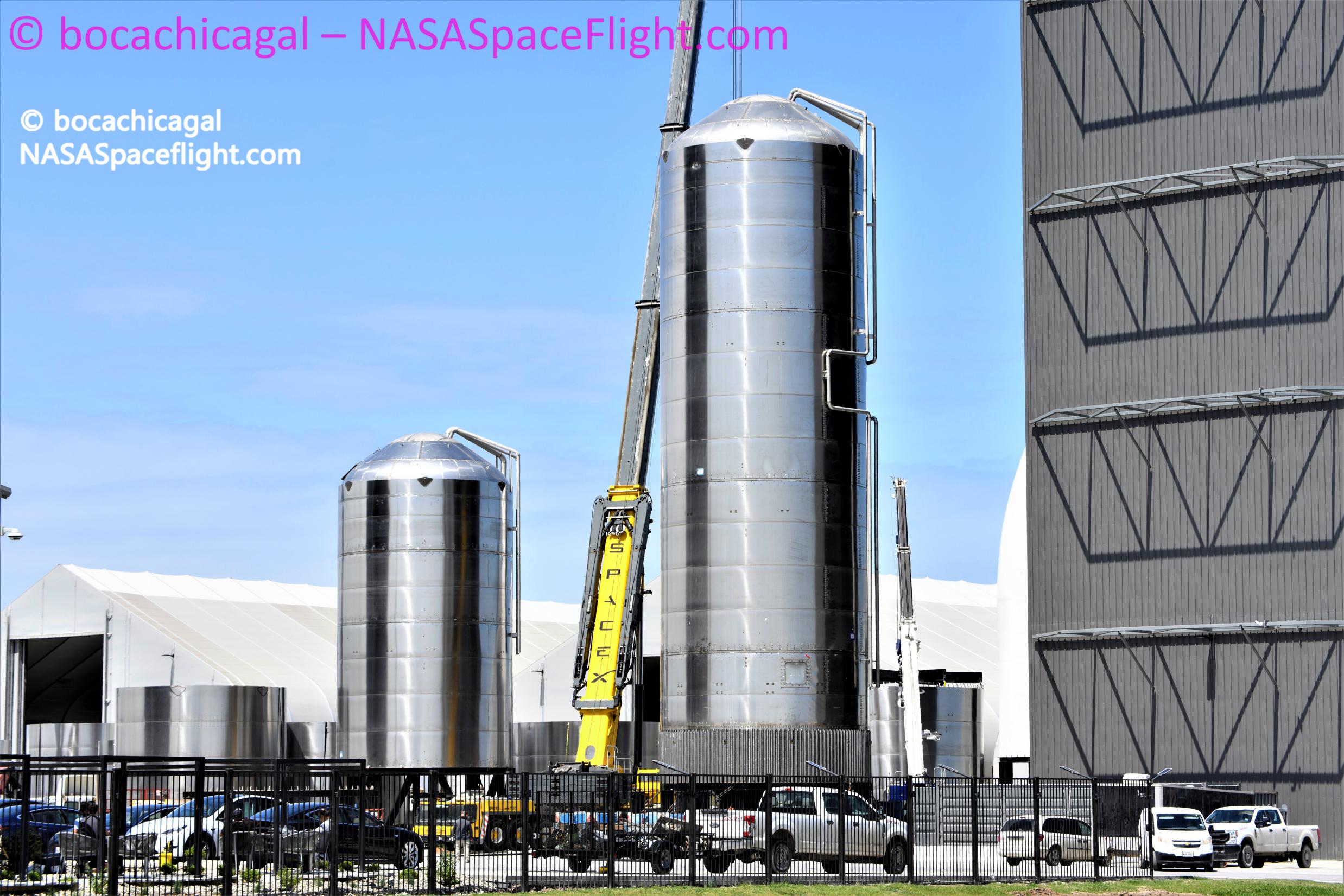
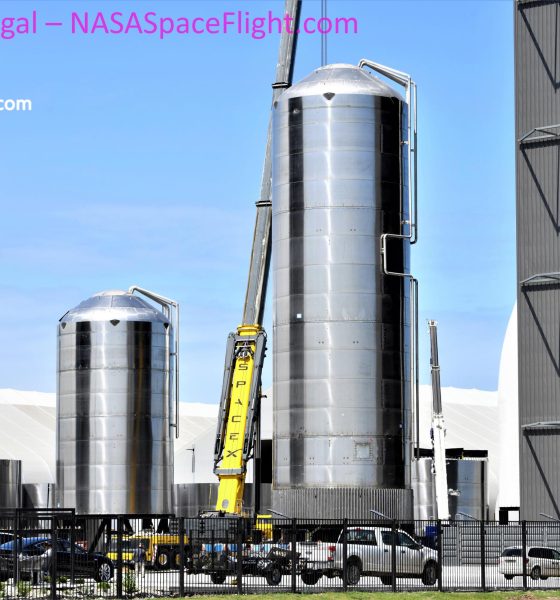
News
SpaceX is building launch pad tanks out of Starship parts and that’s a big deal
SpaceX has begun installing the first of numerous propellant storage tanks at its first orbital South Texas launch facilities – a mostly ordinary and expected step made extraordinary by the fact that those tanks will be built out of Starship parts.
Labeled “GSE” for Ground Support Equipment, the first signs of those self-built storage tanks began appearing at SpaceX’s Boca Chica Starship factory less than two months ago in mid-February. A matter of weeks later, the first of those SpaceX-brand cryogenic storage tanks is off to the launch site for installation (and insulation) while at least two more tanks are well on their way to completion.
While a few ground starge tanks may look like a distraction in the scope of a program tasked with building the world’s largest (and fully reusable) rocket, the existence of those tanks is far more significant than it might initially appear.
Simply put, rocket propellant storage – even for extremely cold cryogenic liquids like those that SpaceX uses – is a thoroughly solved problem. Numerous commercial vendors exist and industrial demand for practically identical tanks is far higher, further lowering commercial tank costs even for those with niche use-cases thanks to economies of scale. For SpaceX’s purposes, major discounts could like be secured given that the company would need to purchase around three to four-dozen commercial-off-the-shelf (COTS) 100,000 gallon tanks to supply a launch pad with enough commodities for two back-to-back launches of Starship and Super Heavy.
That initial launch capability – which SpaceX appears to be working towards – would likely allow the company to start orbital refueling test flights (and Starlink launches, perhaps) immediately after completion. However, that initial capability wouldn’t suffice for ambitious missions to Mars, the Moon, or higher Earth orbits; where one Starship would need to be rapidly refueled with 3-10+ tanker launches. A launch facility capable of supporting 5-10 back-to-back launches (optimally just a few hours apart) would require many times more propellant storage.
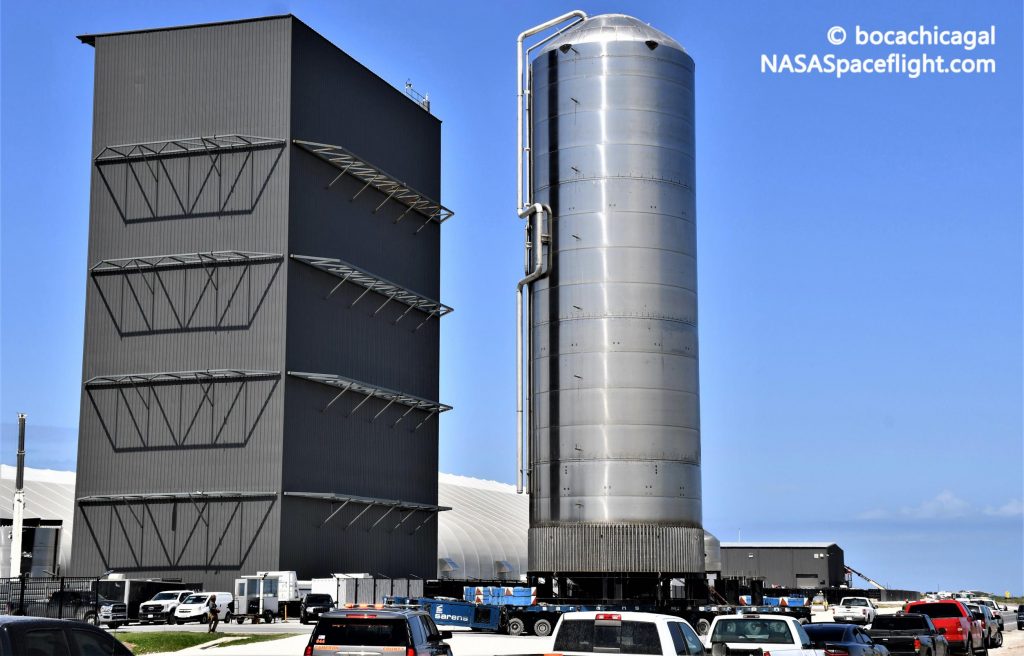
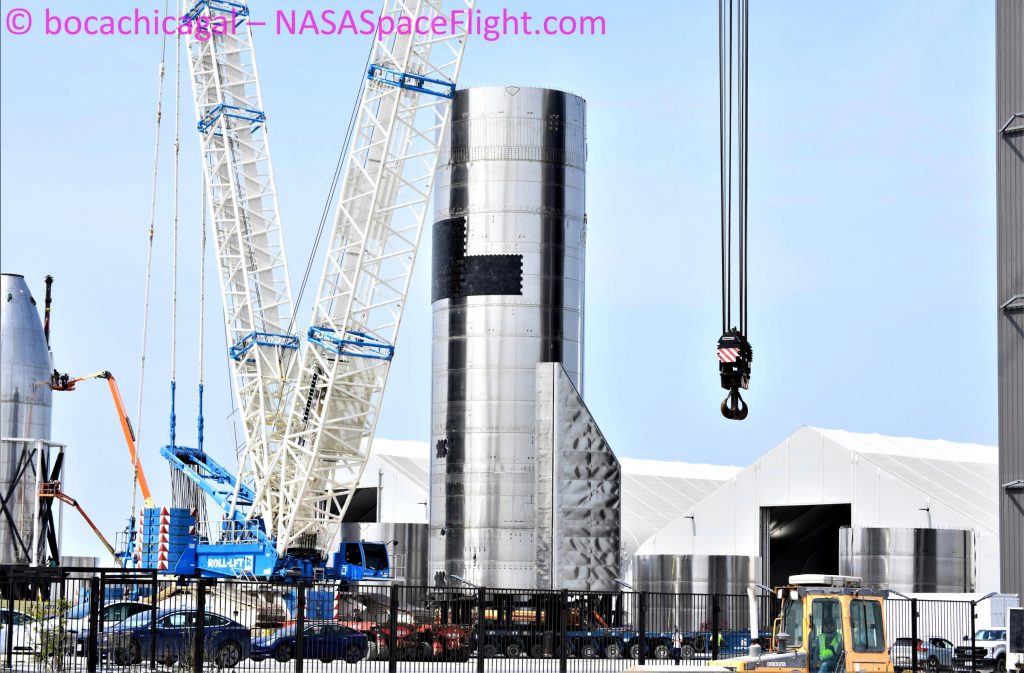
The point is that for the initial target of two (or so) launches between commodity resupply, SpaceX could likely acquire the few dozen new storage tanks it would need for a few million dollars apiece for a total cost likely between $50M and $100M. Instead, SpaceX has decided to design and build its own propellant storage tanks. Even more significantly, the GSE tanks SpaceX has already begun building appear to be virtually identical to Starships.
In other words, SpaceX is effectively taking identical rocket parts, slightly tweaking a handful of those parts, and turning what could have been a rocket into a propellant storage tank. This is significant because relative to all other rockets in history, even including SpaceX’s own Falcon 9 and Heavy, building storage tanks with unchanged rocket parts on a rocket assembly line would be roughly akin to hiring Vincent van Gogh to paint lane lines.
Ever since Elon Musk made the radical decision to switch from composite structures to stainless steel, Starship has always aimed to be radically different than any large rocket before it. Crucially, by using commodity steel, the CEO imagined SpaceX would be able to build Starships fairly easily and for pennies on the dollar next to even SpaceX’s exceptionally affordable Falcon 9. In the last 18 months, it’s become apparent that SpaceX has built a factory capable of churning out one or two massive steel rockets per month and is willing to consign at least four or five of those Starship prototypes to all-but-guaranteed failures for the sake of data-gathering and iterative improvement.
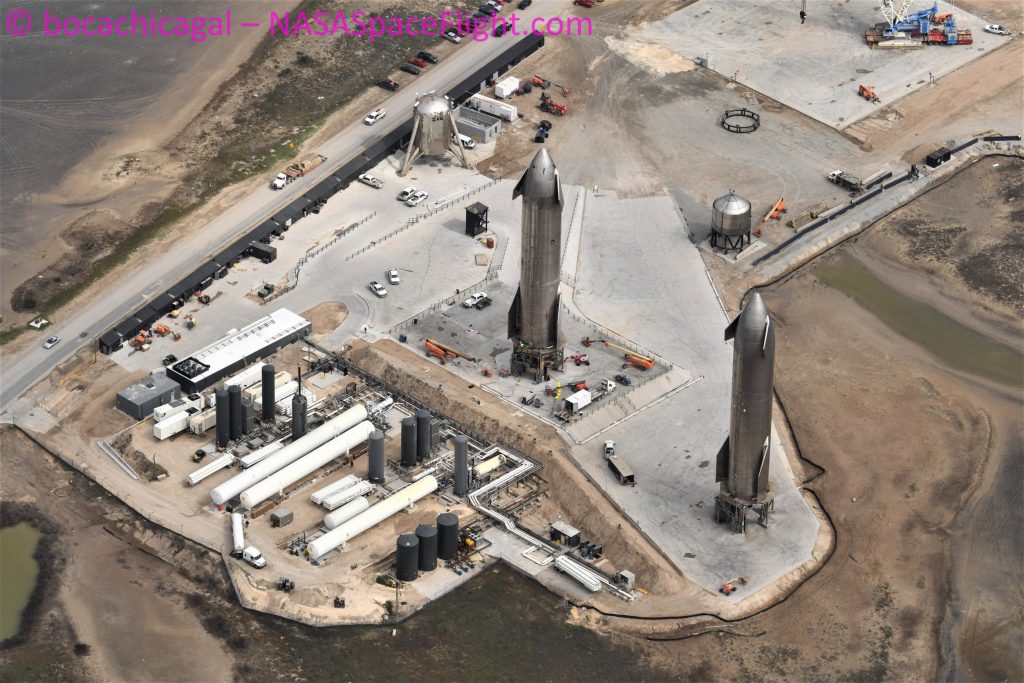
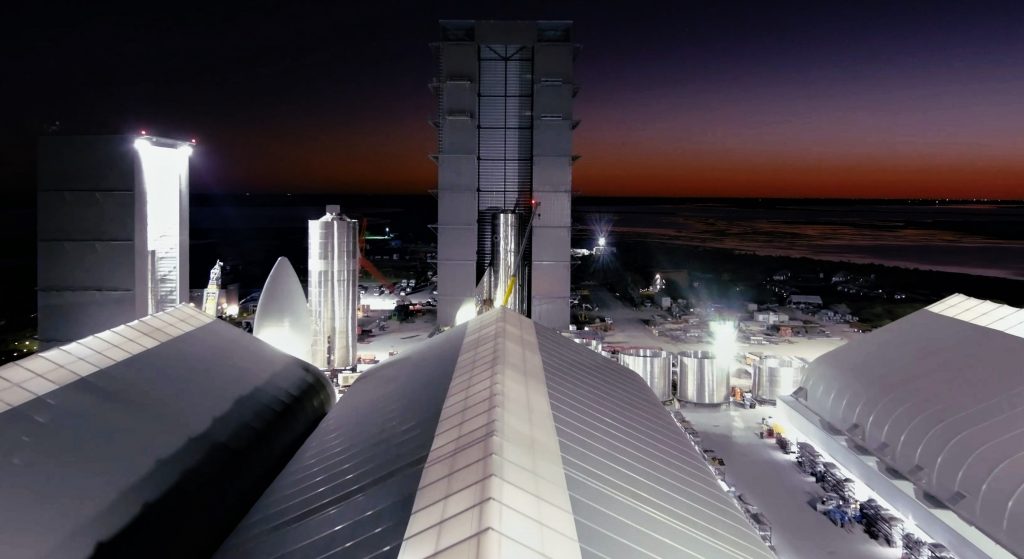
Technically, the most logical conclusion would be that Musk was right and that SpaceX has quickly developed the ability to build steel rockets larger than any other launch vehicle on Earth for perhaps just $5M or less apiece. However, SpaceX is also raising on the order of $1-2B in venture capital annually, so they could technically afford to shoulder the cost of extremely expensive Starship prototypes if the company was confident that there was a path to cut those costs and reach the targets needed for the rocket to make economical sense.
Now, the existence of self-built propellant storage tanks virtually identical to flightworthy Starship airframes all but guarantees that SpaceX is already building Starships for a few million dollars each – and possibly much less. More than a year ago, Musk said that SpaceX was already building the Raptor engines that will power Starship and Super Heavy for less than $1M apiece and was working to mass-produce a simpler variant for less than $250,000. Beyond engines and primary structures, Starship hardware is fairly simple and ranges from Tesla-derived motors, basic flaps, and landing legs to off-the-shelf pressure vessels (COPVs) and wiring. SpaceX has managed that extraordinary cost-efficiency despite the fact that Boca Chica is still nowhere close to the level of volume production Musk is aiming for, meaning that there are still far more efficiencies waiting to be realized.
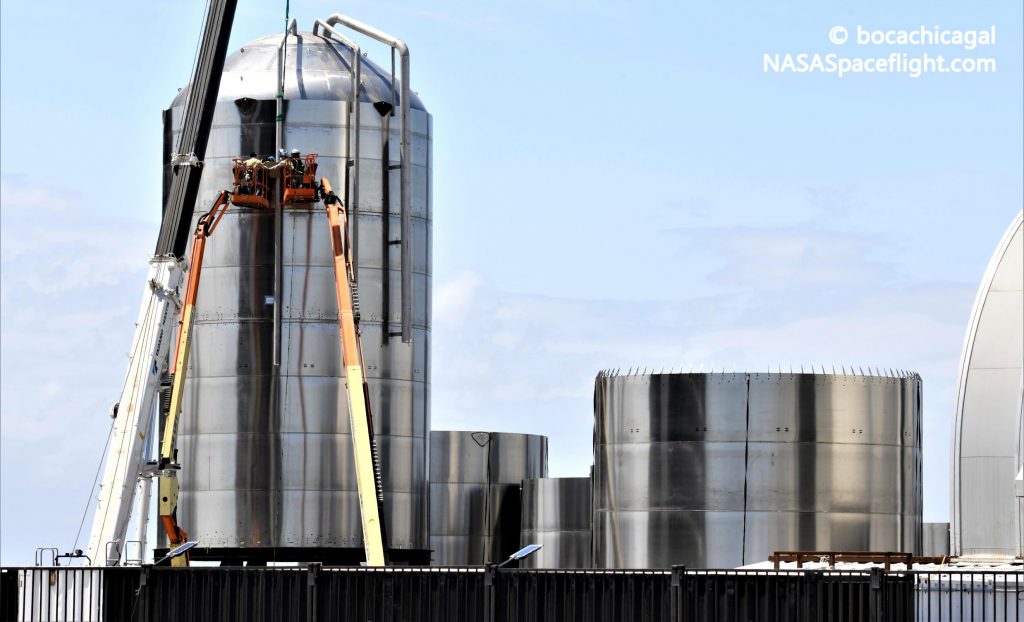

For now, with virtually no retooling and the exact same assembly line, SpaceX’s South Texas rocket factory is busy churning out massive launch pad tanks – one of which is already preparing for installation while another two speed towards completion. All told, SpaceX appears to be preparing foundations for seven 9m-wide (30ft), 27.5m-tall (90ft) Starship-derived tanks that should be capable of storing ~2200 tons (4.9 million pounds) of subcooled liquid methane in three tanks and ~7300 tons (16.1 million pounds) of liquid oxygen in the other four tanks – enough for two orbital Starship launches.

News
Tesla China delivery centers look packed as 2025 comes to a close
Needless to say, it appears that Tesla China seems intent on ending 2025 on a strong note.

Tesla’s delivery centers in China seem to be absolutely packed as the final days of 2025 wind down, with photos on social media showing delivery locations being filled wall-to-wall with vehicles waiting for their new owners.
Needless to say, it appears that Tesla China seems intent on ending 2025 on a strong note.
Full delivery center hints at year-end demand surge
A recent image from a Chinese delivery center posted by industry watcher @Tslachan on X revealed rows upon rows of freshly prepared Model Y and Model 3 units, some of which were adorned with red bows and teddy bears. Some customers also seem to be looking over their vehicles with Tesla delivery staff.
The images hint at a strong year-end push to clear inventory and deliver as many vehicles as possible. Interestingly enough, several Model Y L vehicles could be seen in the photos, hinting at the demand for the extended wheelbase-six seat variant of the best-selling all-electric crossover.
Strong demand in China
Consumer demand for the Model Y and Model 3 in China seems to be quite notable. This could be inferred from the estimated delivery dates for the Model 3 and Model Y, which have been extended to February 2026 for several variants. Apart from this, the Model Y and Model 3 also continue to rank well in China’s premium EV segment.
From January to November alone, the Model Y took China’s number one spot in the RMB 200,000-RMB 300,000 segment for electric vehicles, selling 359,463 units. The Model 3 sedan took third place, selling 172,392. This is quite impressive considering that both the Model Y and Model 3 are still priced at a premium compared to some of their rivals, such as the Xiaomi SU7 and YU7.
With delivery centers in December being quite busy, it does seem like Tesla China will end the year on a strong note once more.
News
Tesla Giga Berlin draws “red line” over IG Metall union’s 35-hour week demands
Factory manager André Thierig has drawn a “red line” against reducing Giga Berlin’s workweek to 35 hours, while highlighting that Tesla has actually increased its workers’ salaries more substantially than other carmakers in the country.

Tesla Giga Berlin has found itself in a new labor dispute in Germany, where union IG Metall is pushing for adoption of a collective agreement to boost wages and implement changes, such as a 35-hour workweek.
In a comment, Giga Berlin manager André Thierig drew a “red line” against reducing Giga Berlin’s workweek to 35 hours, while highlighting that Tesla has actually increased its workers’ salaries more substantially than other carmakers in the country.
Tesla factory manager’s “red line”
Tesla Germany is expected to hold a works council election in 2026, which André Thierig considers very important. As per the Giga Berlin plant manager, Giga Berlin’s plant expansion plans might be put on hold if the election favors the union. He also spoke against some of the changes that IG Metall is seeking to implement in the factory, like a 35-hour week, as noted in an rbb24 report.
“The discussion about a 35-hour week is a red line for me. We will not cross it,” Theirig said.
“(The election) will determine whether we can continue our successful path in the future in an independent, flexible, and unbureaucratic manner. Personally, I cannot imagine that the decision-makers in the USA will continue to push ahead with the factory expansion if the election results favor IG Metall.”
Giga Berlin’s wage increase
IG Metall district manager Jan Otto told the German news agency DPA that without a collective agreement, Tesla’s wages remain significantly below levels at other German car factories. He noted the company excuses this by referencing its lowest pay grade, but added: “The two lowest pay grades are not even used in car factories.”
In response, Tesla noted that it has raised the wages of Gigafactory Berlin’s workers more than their German competitors. Thierig noted that with a collective agreement, Giga Berlin’s workers would have seen a 2% wage increase this year. But thanks to Tesla not being unionized, Gigafactory Berlin workers were able to receive a 4% increase, as noted in a CarUp report.
“There was a wage increase of 2% this year in the current collective agreement. Because we are in a different economic situation than the industry as a whole, we were able to double the wages – by 4%. Since production started, this corresponds to a wage increase of more than 25% in less than four years,” Thierig stated.
News
Tesla is seeing a lot of momentum from young Koreans in their 20s-30s: report
From January to November, young buyers purchased over 21,000 Teslas, putting it far ahead of fellow imported rivals like BMW and Mercedes-Benz.

Tesla has captured the hearts of South Korea’s 20s-30s demographic, emerging as the group’s top-selling imported car brand in 2025. From January to November, young buyers purchased over 21,000 Teslas, putting it far ahead of fellow imported rivals like BMW and Mercedes-Benz.
Industry experts cited by The Economist attributed this “Tesla frenzy” to fandom culture, where buyers prioritize the brand over traditional car attributes, similar to snapping up the latest iPhone.
Model Y dominates among young buyers
Data from the Korea Imported Automobile Association showed that Tesla sold 21,757 vehicles to the 20s-30s demographic through November, compared to BMW’s 13,666 and Mercedes-Benz’s 6,983. The Model Y led the list overwhelmingly, with variants like the standard and Long Range models topping purchases for both young men and women.
Young men bought around 16,000 Teslas, mostly Model Y (over 15,000 units), followed by Model 3. Young women followed a similar pattern, favoring Model Y (3,888 units) and Model 3 (1,083 units). The Cybertruck saw minimal sales in this group.
The Model Y’s appeal lies in its family-friendly SUV design, 400-500 km range, quick acceleration, and spacious cargo, which is ideal for commuting and leisure. The Model 3, on the other hand, serves as an accessible entry point with lower pricing, which is valuable considering the country’s EV subsidies.
The Tesla boom
Experts described Tesla’s popularity as “fandom culture,” where young buyers embrace the brand despite criticisms from skeptics. Professor Lee Ho-geun called Tesla a “typical early adopter brand,” comparing purchases to iPhones.
Professor Kim Pil-soo noted that young people view Tesla more as a gadget than a car, and they are likely drawn by marketing, subsidies, and perceived value. They also tend to overlook news of numerous recalls, which are mostly over-the-air software updates, and controversies tied to the company.
Tesla’s position as Korea’s top import for 2025 seems secured. As noted by the publication, Tesla’s December sales figures have not been reported yet, but market analysts have suggested that Tesla has all but secured the top spot among the country’s imported cars this year.








